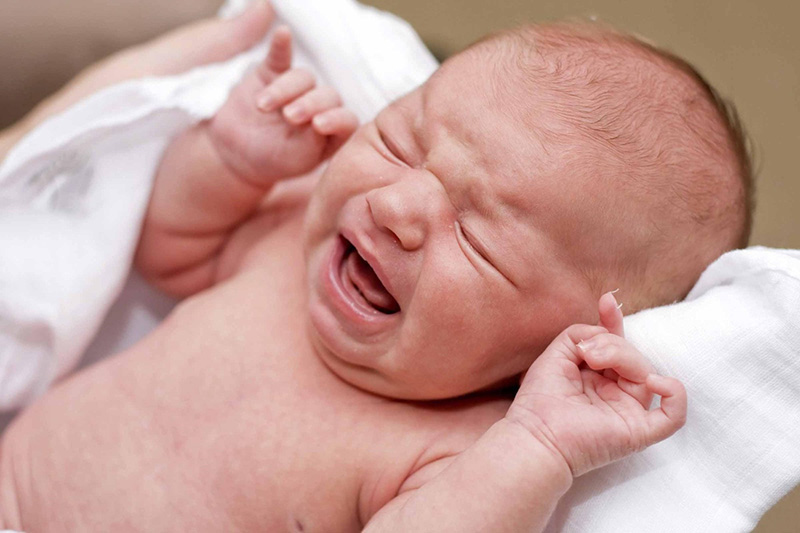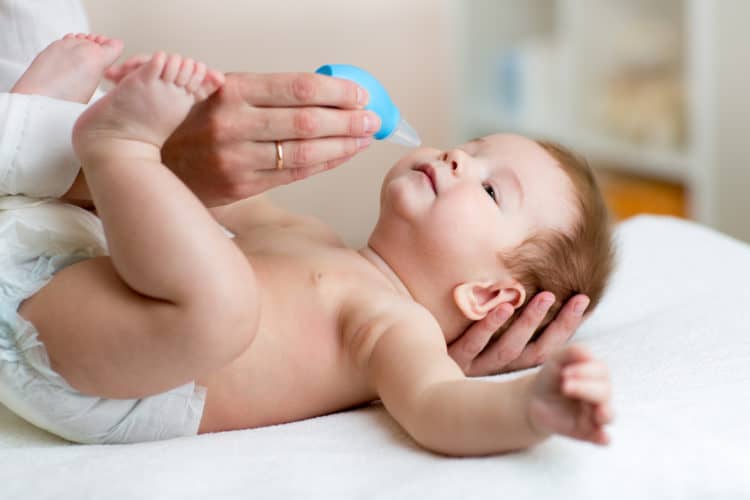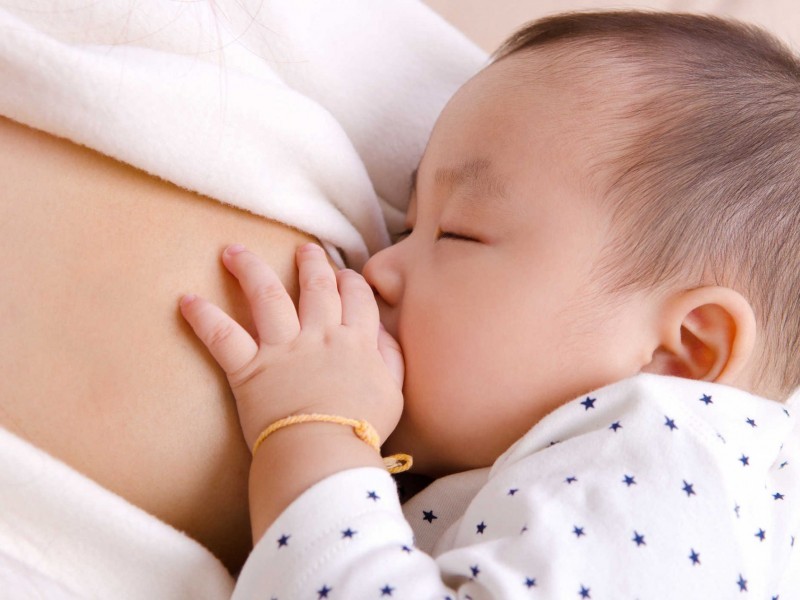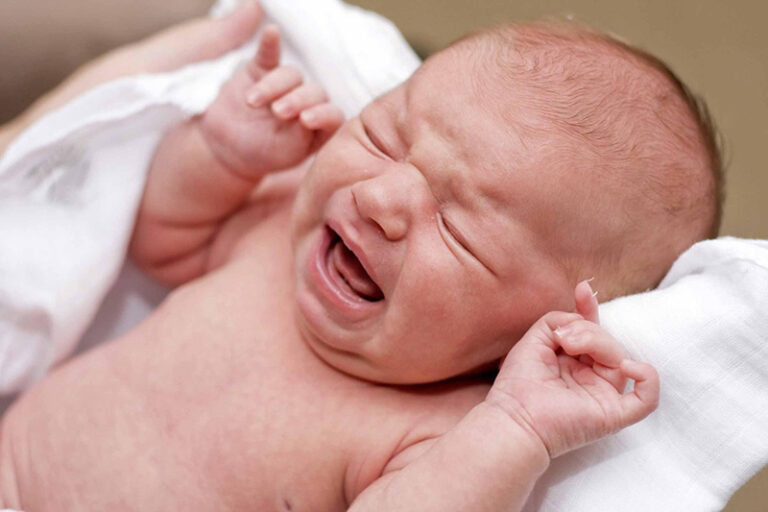Newborns often experience respiratory problems. Symptoms such as coughing up phlegm or having phlegm are common and can cause discomfort, fussiness, poor sleep, and refusal to feed. What should parents do to improve their baby’s phlegm without resorting to antibiotics?

Relieving Phlegm with Essential Oils
The safest and most commonly used essential oil for newborns is cajuput oil. The aroma of cajuput oil helps reduce stress, purify the air, and is particularly beneficial for the respiratory system, making it suitable for newborns. A small amount of cajuput oil can disinfect the respiratory tract and loosen phlegm, making it easier for the baby to breathe.
How to use cajuput oil for babies:
- Add a few drops of essential oil to the baby’s bathwater.
- Apply to the baby’s clothes or collar.
- Use an essential oil diffuser in the room.
- Note: Do not apply concentrated essential oil directly to the baby’s skin.
Suctioning the Baby’s Nose

You can remove your baby’s phlegm using a nasal aspirator and saline solution. This method effectively and cleanly removes phlegm. Follow these steps:
- Put 3 drops of 0.9% saline solution into each nostril to loosen the phlegm.
- Squeeze the bulb of the aspirator before placing the tip into one nostril, closing the other nostril, and then release the bulb.
- The phlegm will be sucked up with the air. Repeat this process until the amount of phlegm decreases and the baby is no longer uncomfortable.
>> Top Nasal Aspirators Recommended by Moms:
Chest Physiotherapy (CPT) to Loosen Phlegm
When performing CPT to clear your baby’s phlegm, it’s crucial to follow the correct procedure.
This method uses vibrations created by air impacting the chest wall to propel phlegm out of the airways, allowing the baby to breathe easier and clearing congested phlegm in the trachea and bronchi, helping the baby eat and sleep well, and play comfortably.
Perform CPT for your baby as follows:
- Place the baby face down or on their side on the bed, with their head slightly tilted down. No pillow is needed.
- Place a towel under the baby’s bottom to create a 15-degree angle between their bottom and head.
- Cup your hand and gently pat the baby’s back, from the lungs towards the neck (the area of the lungs from the mid-back upwards). The patting should make a “cupped” sound, and you should feel the baby’s chest vibrate with the rhythm.
- Continue this rhythmic patting for about 3 minutes. Then, pick up the baby and induce coughing to expel the phlegm. You can induce coughing by gently stroking the baby’s throat. Once the baby coughs up phlegm, clean their nose and mouth with a tissue.
Things to keep in mind when performing CPT for your baby:
- The best time to perform CPT is in the morning.
- CPT is only for babies with a productive cough (not a dry cough).
- When patting, focus on the lung area, avoiding the stomach, spine, or breastbone.
- Use firm but gentle pats; avoid excessive force that could hurt the baby.
Using Warm Steam
Create warm steam by running hot water in a basin in a closed bathroom. Place your baby in the steamy bathroom for about 10 minutes and then take them out. You can repeat this several times a day to ease their breathing.
Breastfeed More Frequently
Breast milk contains essential nutrients, especially antibodies that support a healthy immune system. Frequent breastfeeding also provides more fluids, which can help thin the phlegm.

Boosting the Baby’s Immune System
Newborns rely on breast milk for their development during the first few years of life. Therefore, maintain a healthy diet to ensure nutritious breast milk that supports the baby’s overall health, development, and a strong immune system.
Additionally, consider supplementing with vitamins like D3 and calcium to boost the baby’s resistance.
Important Notes When Your Baby Has Phlegm
- Do not give your baby antibiotics without a doctor’s prescription (overuse of antibiotics can negatively impact their health, especially in newborns).
- Clean the baby’s nose and throat daily.
- Maintain a clean living environment.
- If the baby’s phlegmy cough persists, take them to a pediatrician for examination and appropriate treatment.
Reference source: indembassy

